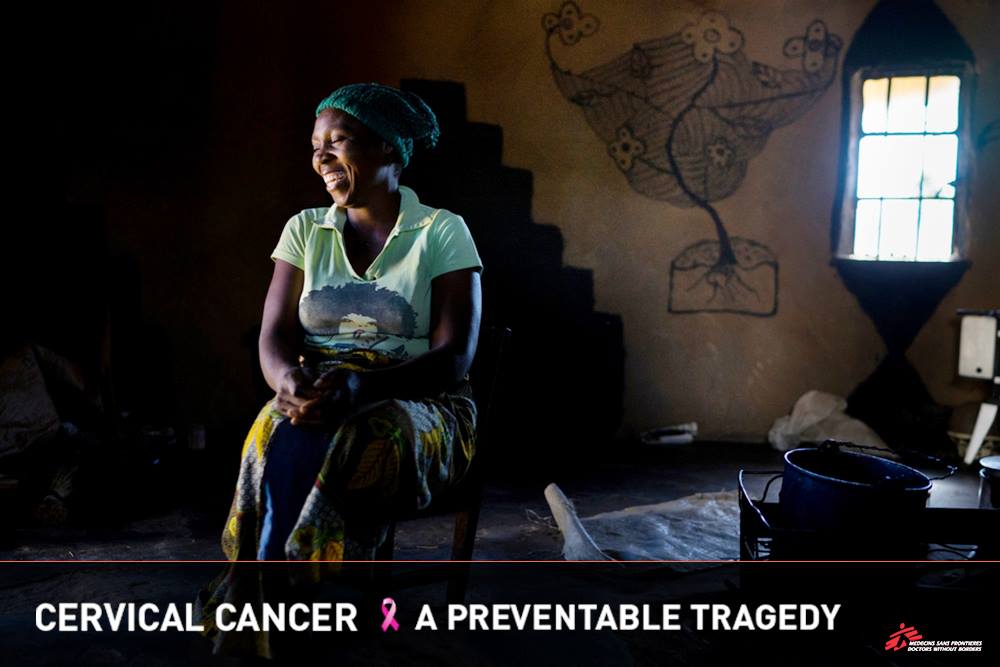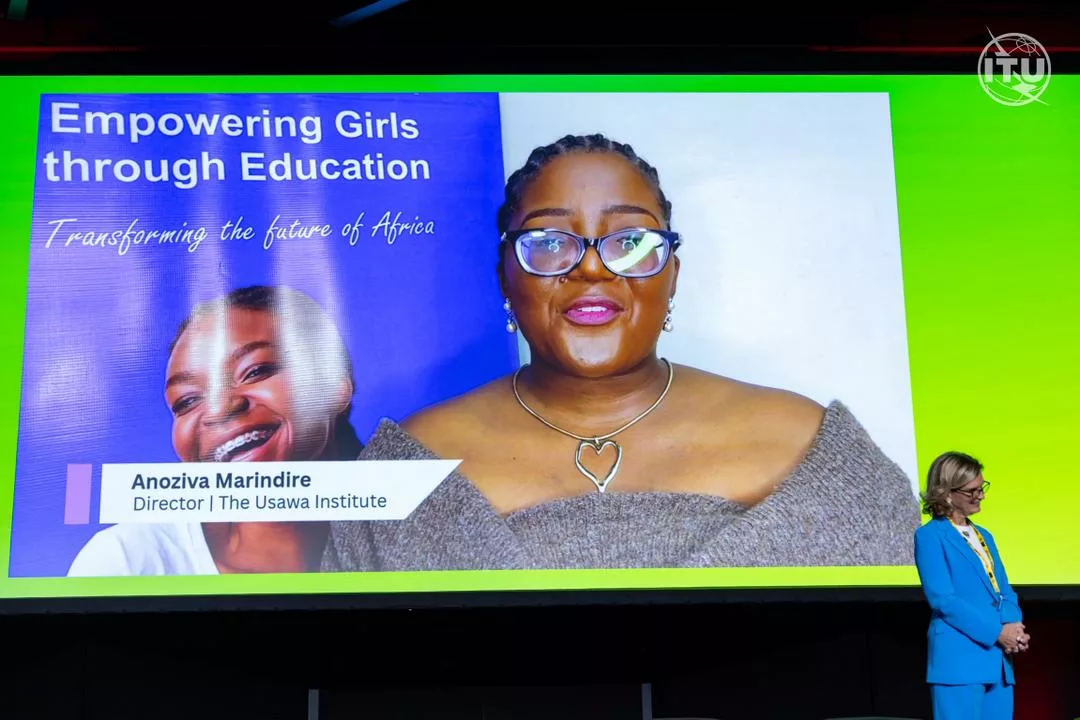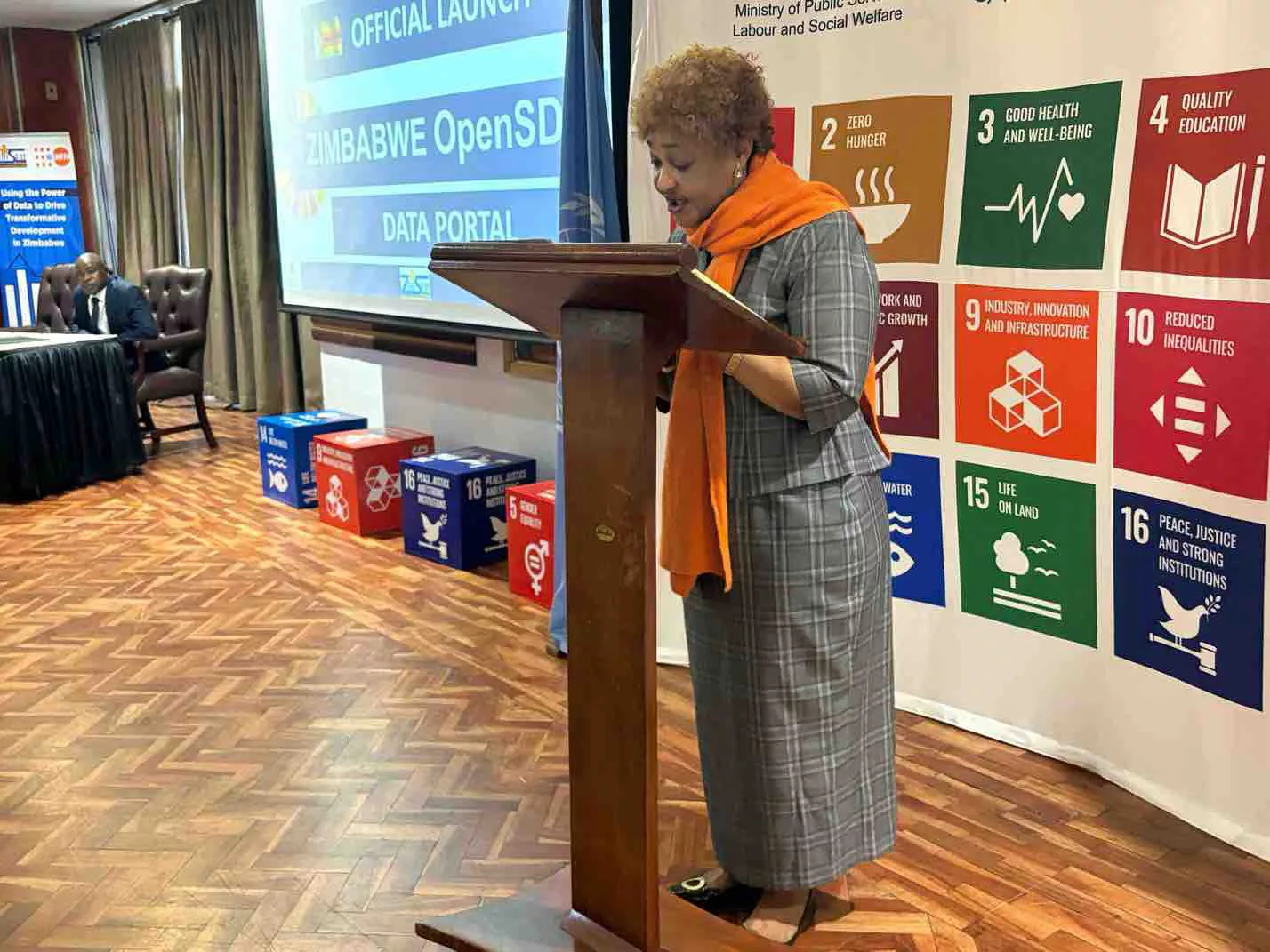Shuvai: “I am happy because the nurses told me that I am now VIAC negative”
Shuvai Munyaradzi, a 24 year old hairdresser from Hwiru village in Gutu is extremely happy that she was screened for early signs of cervical cancer and that she got preventive treatment after being detected with lesions on her cervix, an early sign of cervical cancer.
“I was suffering from back and stomach pain. A neighbor advised me to go to the clinic for cervical cancer screening. My husband was very supportive and accompanied me to the hospital,” explains Shuvai, who had stopped working due to the pain.
In June 2018, Shuvai was screened for cervical cancer using a method called visual inspection with acetic acid and cervicography (VIAC) at a rural hospital in Gutu. VIAC involves swabbing the opening of the womb, known as the cervix, with a vinegar-like solution of dilute acetic acid and using a camera to record images.
Shuvai’s on-the-spot results came back positive, meaning the images revealed the presence of abnormal, precancerous cells. “When I went to the clinic for screening, the nurses realised that I was developing cancer cells,” she says.
There was ‘good’ news however. The results showed that the precancerous lesions were covering less than 75 percent of her cervix and not encroaching into the cervical opening, meaning she was eligible for treatment using a procedure called cryotherapy. Using the ‘see and treat’ approach, Shuvai’s cryotherapy was done on the same day.
Cryotherapy is a procedure that freezes a section of the cervix using nitrogen gas to destroy precancerous cells. If destroyed successfully, the cells are prevented from developing into cervical cancer.
“When the nurses told me that I had pre-cancerous lesions, I was shocked and shaken, as I wasn’t expecting this. It unsettled me for a long time. I have two young children and wondered if I would be able to take care of them. When the nurse showed me the picture of my cervix on the screen, I saw the lesions on the pictures of my cervix, and I could see that it didn’t look the same as a normal cervix.
“The nurses asked for my permission to freeze the cancer cells and provide treatment using cryotherapy, which they explained.
“After the cryotherapy, I was asked to come back to the hospital for a repeat screening after six months. I came back in January this year, and the result was negative. This meant that I no longer had pre-cancerous lesions and the cancer cells had been destroyed. I was advised to continue with routine cervical cancer screening every three years.
Sr Mercy Mandizvo, a nurse mentor with Medecins Sans Frontieres (MSF) explains: “Women who are HIV negative are encouraged to get screened for cervical cancer once every three years while women who are HIV positive are encouraged to get screened once every year.”
Shuvai was relieved that she got treatment early and did not have cervical cancer. I am happy because the nurses told me that I am now ‘VIAC negative,’ she says.
“I want to encourage other women to go for screening early so that they can be helped like me and don’t go to the clinic when it is too late, says Shuvai.
Shingairayi: “Now I educate other women on the importance of screening early”
While passing through Mukaro Mission hospital, Shingairayi Mutuda, 44 years, from Gutu agreed to be screened for early signs of cervical cancer because she hadn’t been screened before.
She was screened using a method called Visual Inspection with Acetic Acid and Cervicography (VIAC), which involves swabbing the opening of the womb, or cervix with a vinegar-like solution of dilute acetic acid and taking images of the cervix (cervicography), which help to identify the presence of abnormal, precancerous cells.
Shingairayi’s results showed that she had lesions on more than 75 percent of the cervix, and she was referred for Loop Electrosurgical Excision Procedure (LEEP). During the LEEP procedure, patients are given local anaesthesia before an electrical current is passed through a wire loop to remove or cauterise more advanced lesions from the cervix.
Shingairayi was assisted by MSF to travel to Harare where she underwent LEEP at Newlands clinic.
“When I was first told that I had lesions that could develop into cervical cancer, I was shocked, says Shingairayi, who earns a living as a farmer and through vending around her village. In my community, we always tell each other that if someone has cancer, she will die. I thought I was going to die despite assurances from nurses because people would say that cancer cannot be treated” says Shingairayi. One month after the procedure, Shingairayi was asked to come back to Mukaro hospital where she was told her uterus needed to be removed because the lesions were too extensive.
“When I heard about the results, I was angry. Some of the people, whom I had gone for LEEP with, had good results.
“The nurses asked me if I was willing to remove my uterus. MSF assisted me again with this process. They provided transport and paid the bills for the procedure to be done. I was scared of the operation, but it was successful. I thought I was not going to wake up but nurses kept on counseling and encouraging me. Now I am very fit. I am continuing to do my work. My children are supportive.
“I am not sure how I developed lesions that cause cervical cancer. It might be because I had been using traditional herbs. I heard during health education sessions that inserting traditional herbs in one’s private parts is an unsafe hygienic practice that can cause cervical cancer. I do not have relatives who died of cervical cancer.
“Now I educate other women about the importance of screening early for cervical cancer so that they can get treatment early, explains Shingairayi.
In rural Gutu district, MSF has been supporting the Zimbabwean health ministry to provide a comprehensive package of prevention and early treatment for cervical cancer at six health centres since 2015. Gutu is the only district in the country with more than one rural centre offering cervical cancer screening services.
Between 2015 and December 2018, 17 430 women were screened for cervical cancer at the six health centres. Of these, 850 women underwent cryotherapy. In 2018, 59 women received LEEP treatment provided by a LEEP machine donated by MSF to Gutu rural hospital in March 2018.
While thousands of women in rural Zimbabwe now have access to the screening and treatment of precancerous lesions, the best way of stopping the disease from developing in the first place is to vaccinate girls against the human papilloma virus (HPV) before they are exposed to the virus. In 2018, MSF supported MoHCC to roll out the human papilloma virus vaccination exercise to more than 15 000 girls in Gutu.






